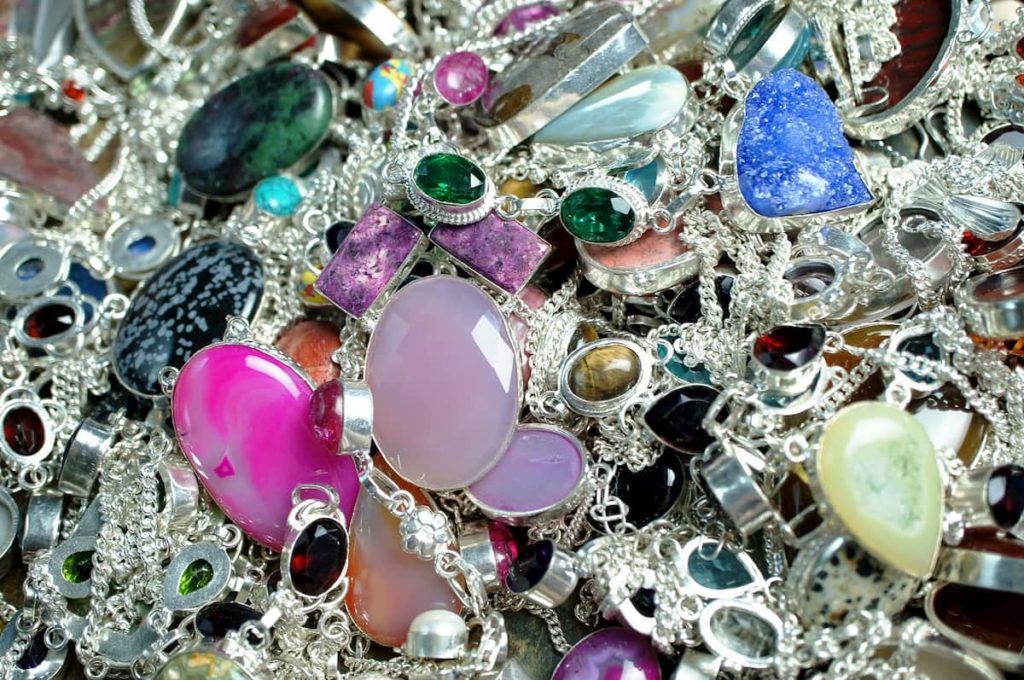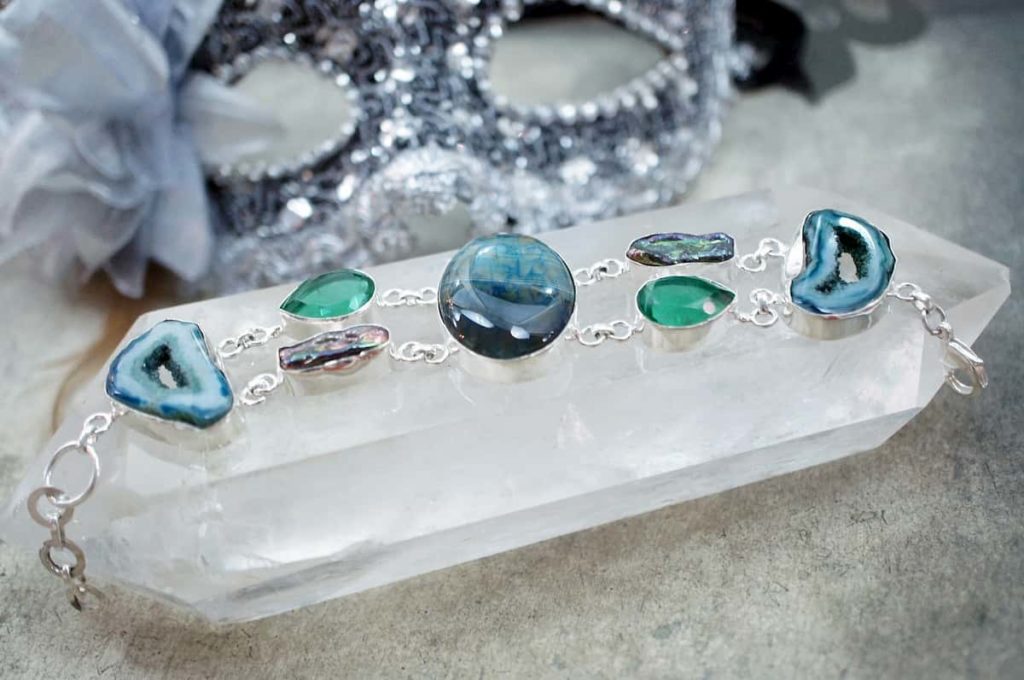Does Sterling Silver Tarnish Over Time?

Sterling silver is an extremely popular type of silver, which is why it is surprising how little people know about its key properties. Many silver investors new to the game have questions like, “does sterling silver tarnish over time?” Many silver collecting noobs that recently started buying silver bullion and products might be misinformed about exactly what counts as sterling silver. Put simply: sterling silver is silver with 92.5% silver purity. The remaining 7.5% of a sterling silver product is made of other metals, although the type of metal combined with the .925 pure silver will vary, depending on the mint or manufacturer behind a given piece. Truthfully, there’s nothing to suggest that sterling silver is objectively better than other types of silver. In fact, people buying silver coins will generally prefer their silver to have a purity significantly higher than .925. However, sterling silver’s high durability makes it the ideal alloy for use in jewelry and flatware. Because this kind of silver combines pure silver with a decent amount of other metals, sterling silver necklaces, earrings, or rings can last considerably longer than some other types of jewelry. https://www.youtube.com/watch?v=gZmXjt5H_q8 Tarnishing is one major concern that new silver jewelry owners have about their pieces. The discoloration that comes with tarnished items can be off-putting to look at, and it surely impacts the value of the pieces. Does sterling silver tarnish? The answer is that it absolutely does. All silver tarnishes over time, with the exception of extremely pure fine silver. But because fine silver is not generally used to craft jewelry, consumers are left contending with the reality of tarnishing in their sterling silver earrings, necklaces, and other jewelry. Luckily, we’ve got you covered. Although sterling silver does tarnish, there are many ways to prevent this tarnishing for as long as possible. And contrary to the popular belief of some silver enthusiasts, even hardcore tarnishing can often be cleaned off to return sterling silver jewelry products to their original shining beauty. This guide will provide a clear answer to the question, “does sterling silver tarnish,” as well as a number of related questions that silver collectors often have about the precious metal and its appearance over time. 
Does Sterling Silver Tarnish?
Let’s start with the simple question; the answer is yes. Sterling silver tarnishes over time. To be more precise, the pure silver inside of sterling silver doesn’t tarnish. But when the metals mixed with the silver are exposed to certain chemicals or acids which the alloy is exposed to over time. This turns the once brilliant silver color of the sterling silver into a darker, almost bronzed, appearance. But why does sterling silver tarnish? Sterling silver can start to tarnish naturally over time when exposed to chemicals in the air. When the non-silver alloys used to make the silver sterling are exposed to common chemicals in the air, they start to lose their shine and begin to tarnish. When silver sterling items are stored in areas with especially high humidity, this process becomes much faster. Additionally, it’s best to keep your sterling silver pieces out of the reach of common household chemicals, including bleach, deodorant, perfume, hairspray, or body lotion. All of these things can help make tarnishing happen even faster. Tarnishing isn’t pretty. When reselling old jewelry, heavy tarnish can significantly reduce the value of a piece. In the later stages of sterling silver tarnish, the brilliant reflective surface of the precious metal can be dark, almost black. This tarnishing can also rub off on the consumer, turning fingers, necks, and wrists darker.
Preventing Sterling Silver Tarnishing
If you’re worried about your precious family heirlooms being tarnished beyond recognition over time, we’ve got some good news. It is possible to prevent sterling silver tarnish quite a bit. There are several ways to prevent tarnish. The tarnishing process, as we explained above, involves a chemical reaction between the non-silver metals in sterling silver and common chemicals found in the air. One way to prevent expensive sterling silver jewelry or silverware from tarnishing is to limit its exposure to open air. Especially in places with high humidity, it can help to store your jewelry or silverware in airtight bags or containers. Most expert silver retailers will sell jewelry cases that limit air exposure. But even if you don’t want to go all-out on an expensive airtight container, at-home solutions are very much possible. You can even store sterling silverware in a plastic bag! To do so, be sure to push the bag down to eliminate as much air as you can before sealing it. It also helps to wrap the pieces in light tissues to further limit their exposure to the open air inside of this makeshift container. Another easy at-home method to prevent silver from tarnishing is to keep a piece of chalk in your jewelry or silverware box. The chalk naturally sops up much of the moisture and chemicals in the air, keeping them away from your cherished sterling silver items. One or two pieces of chalk can seriously prevent tarnishing. You can also use silica gel packets to prevent moisture in the air from getting onto silverware or sterling silver jewelry. Silica gel packets are those tiny packages you often find in packs of beef jerky or other dry snacks. Putting one or two of them in a container with your silver can help to prevent moisture in the air from causing that annoying tarnishing. Cleaning sterling silver pieces weekly is another great way to prevent the tarnishing process for as long as possible. There are, of course, several different ways to clean silver. The method that’s right for you depends mostly on the specific type of sterling silver you have. We recommend using a polishing rag to increase the shine of sterling silver and remove some of the pesky tarnish that has already begun to accumulate. Polishing weekly is a good preventative measure, as doing so can keep tarnish from growing on your silver pieces. Avoid using old shirts, paper towels, or tissues to clean your silverware or jewelry. Some folks assume that these types of cloth are as good as any to clean silver and eliminate tarnish. But the ink on t-shirts can damage sterling silver, while paper towels or tissues can scratch your items.
Preventing Silver Coin Tarnishing
Most coins are made using purer silver than sterling grade. Many silver coins are struck using .999 or .9999 pure silver. These coins should not be cleaned using the same methods used to prevent tarnishing in sterling silverware or jewelry. Even coins with similar purity to sterling silver should not be cleaned using silverware solutions like baking soda or polishing, as these methods can hurt the coin’s intricate design through scratches or other blemishes. Some bullion experts argue that silver coins should not be cleaned at all, except for in drastic circumstances. This is because a normal amount of tarnish can actually tone and improve the appearance of a silver coin’s design. But when a coin’s tarnish becomes too significant, it can clearly ruin the natural appeal of the piece. Think very carefully before trying to ‘clean’ the natural tarnish off of a silver coin, especially an older piece. In some cases, the brilliant shine of an untarnished coin may make it look better. In many others, however, the natural toning that happens over many years actually increases the value of a coin. It brings with it a sense of history that easily factors into the coin’s value to the discerning collector. If your silver coin has become tarnished enough to warrant a cleaning, professionally made silver coin cleaners are often the way to go. Hero Bullion actually sells an instant coin cleaner. Beware of coin cleaners that require you to rub or wipe the coin. Our coin cleaner is a dip solution, which eliminates the possibility of users scratching up their coins.
Removing Tarnish from Sterling Silver
When people ask “does sterling silver tarnish,” their next question generally concerns whether or not tarnished silver can be returned to its original shine. The good news is that tarnish on silver can be removed relatively easily at home, even when the silver in question is far along in the tarnishing process. https://www.youtube.com/watch?v=t1IhShFvKcU The most common method for removing tarnish from silver involves aluminum foil and baking soda. First, you’ll need a pot filled with water. Boil the water while placing a layer of aluminum foil in a container to the side. Place your silverware on the top of this aluminum foil. Mix about half a cup of baking soda into the boiling water and stir before pouring the mixture into the container with the aluminum foil. Be sure that the silverware is covered by the water and baking soda solution. Some silver collectors forget this important part of the process: polish the pieces by hand after the tarnish removal process is completed. This can help to get rid of some of the tarnish which was softened by the baking soda, water, and aluminum foil.
Frequently Asked Questions About Sterling Silver Tarnishing
You’ve got questions about the tarnishing and cleaning process of sterling silver, and we’ve got answers. This section will address some of the most common questions new silver collectors have when searching google for the question “does sterling silver tarnish?”
Q: Why does sterling silver tarnish?
A: Sterling silver tarnishes, just like all forms of silver. The silver itself tarnishes very little. But because sterling silver is made by combining 92.5% silver with 7.5% other metals, sterling silver tarnishes.
Q: What causes silver tarnishing?
A: Sterling silver is tarnished when chemicals in the air react with the chemicals in the silverware or jewelry. This is why one of the best ways to keep silver from tarnishing is to keep it away from air, particularly moist air.
Q: When does sterling silver tarnish?
A: Technically, the tarnishing process begins as soon as sterling silver is exposed to open air. But how long it takes for sterling silver to become noticeably tarnished depends on a number of factors. Without any precautions, sterling silver can tarnish in just a few weeks. But proper preventative measures can keep silver shining for many years.
Q: Does sterling silver tarnish go away over time?
A: Tarnishing is not a problem which will generally fix itself. In fact, tarnishing gets significantly worse over time. Pieces of sterling silver with just a little tarnishing might be darkened, while pieces further in the process might look completely black from the tarnish! Using preventative measures on your sterling silver items is essential.
Q: What is the best way to prevent silver tarnishing?
A: A combination of restorative and preventative strategies is recommended to care for silver in the long-term. We advise that sterling silverware owners keep a piece of chalk with their pieces and carefully wipe them regularly for the best results.
Q: Can silver coins tarnish over time?
A: Yes. Coins with a lower purity (<.999) are likely to go through the tarnishing process quicker than purer bullion pieces. However, all silver coins tarnish eventually. Many collectors avoid cleaning the tarnish off their old coins, because this tarnish can help add a sense of tone and history to the collectible. 
The Bottom Line: Does Sterling Silver Tarnish?
Like all silver, sterling silver does tarnish. When silverware, jewelry, or other forms of sterling silver are exposed to the air, the tarnishing process automatically begins. But there’s no need to fear! In addition to being completely natural, there are several ways to prevent or limit the effects of this process. Storing silver in a place with very little air exposure is a great place to start. Additionally, silica gel or chalk can prevent moisture from gathering in spots where silver is being stored, further keeping the silver away from the troublesome chemicals that cause tarnishing. While most bullion experts advise against wiping away the toning tarnish that naturally accumulates on silver coins, cleaning silverware is an essential part of caring for these items. We walked you through one popular home method of cleaning sterling silverware, which involves aluminum foil and baking soda. Keeping silver items looking their best requires collectors to take a multifaceted approach to tarnish prevention. Although tarnishing is completely natural, regularly cleaning and appropriately storing silverware and jewelry can keep these pieces looking their shiny best.
About The Author
Jake Haugen
Follow @herobullionHero Bullion provides an environment that is informative and safe for those looking to own physical gold and silver bullion as an investment. We love helping folks at all stages throughout their bullion journey making progress towards acheiving their financial goals. Whether you are a seasoned bullion investor or brand new to the game of gold and silver bullion ownership, we're here to help and serve you in any way we can.
